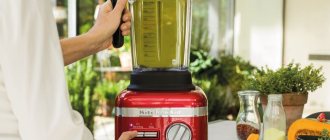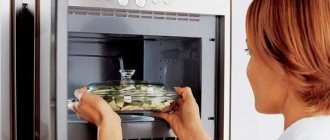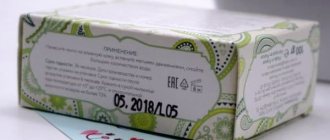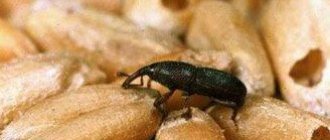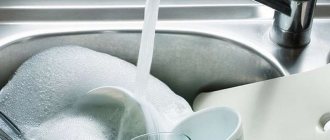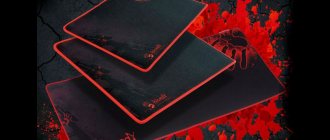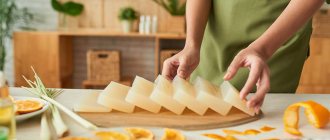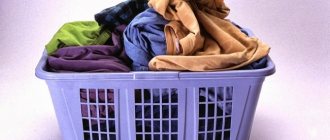Since the Americans released the first plastic bottle in 1970, this cheap and practical thing has been used everywhere as a container for water, butter, milk, juice, and carbonated drinks. Many people keep water bottles for a long time, because they are so convenient to take on the road or to a workout. However, not all bottles can be reused. The possibility of reusable use depends on the quality of manufacture and consumer characteristics of the material.
A win-win option for reusable use is glass, but some types of plastic are also guaranteed not to harm your health.
Which plastic bottles can be reused
Different types of plastic are used to make plastic packaging, but not all of them are allowed to be used for food purposes more than once.
- Most often in stores you can find drinks packaged in PET bottles (PET, PETE). They are made of polyethylene terephthalate and are marked with a triangle with the number 1 inside it. They are easy to identify by their characteristic round bulge at the bottom. Such containers are disposable, as they have low wear resistance and cannot be properly disinfected for further use.
- Plastic marked 2 (PEHD, HDPE, LDPE) is made from high-density polyethylene. Most often used for packaging milk and drinking yoghurt. Suitable for long-term storage and reusable use.
- You should not buy packages with the number 3 (Polyvinyl chloride, PVC, PVC). This type of plastic is used in the technical field and is not suitable for contact with food.
- Bottles with the abbreviation 4 (PELD (LDPE), HDPE) are made of low-density polyethylene. Most often used as a container for various detergents. Can be used repeatedly.
- Plastic packaging marked 5 (PP, PP) is made of polypropylene. This is one of the safest types of plastic. Used in making food containers and yogurt cups. Reusable and reheatable.
- The packaging with the number 6 (PS, PS) is made of polystyrene. Most often, disposable tableware and foam are made from it. Not suitable for repeated use.
- Marking 7 is a mixture of different types of plastic. The most popular of them is polycarbonate (PC). It is used to make 19-liter water bottles, as well as baby bottles. It is considered the most wear- and heat-resistant. Allowed to be used up to 50 times.
It is worth remembering that upon contact with fatty foods, as well as when heated in a microwave oven, all types of plastic, except 5 and 7, begin to release toxic substances.
Polycarbonate or PET
For bottled water, polycarbonate or polyethylene terephthalate (PET) packaging is used. The safest plastic is considered to be polycarbonate, which is characterized by strength and resistance to high temperatures.
It can be reused, but only for storing water. In addition, polycarbonate retains the original taste and beneficial properties of drinking water throughout the year.
PET containers allow ultraviolet light and oxygen to pass through, which deteriorates the quality of the contents and increases the number of harmful bacteria. In addition, it is not resistant to shock and wear, or to elevated temperatures.
Such products can only be used once and it is not recommended to store water in PET packaging for longer than three months. Otherwise, such containers can become a source of toxic and infectious diseases, poisoning and allergies.
We looked at how many times a plastic bottle can be used. And why it is not recommended to re-boil water in a kettle, read the link https://vsepodomu.ru/kuhnya/mozhno-li-kipyatit-vody-neskolko-raz/.
Source
How to wash a bottle for reuse
Whatever the marking of a plastic flask, it must be properly disinfected after each use:
- You need to wash with warm water with the addition of soap solution or soda.
- You cannot treat plastic containers with boiling water, as this will cause microcracks to form, which will shorten their service life.
- Instead of soap, you can disinfect with a vinegar solution or an antibacterial mouthwash.
- It is advisable to pay special attention to the neck and lid, since the majority of germs and dirt accumulate on them. If you are not sure about the cleanliness of the neck, it is better to drink through a straw.
- When it is difficult to reach the bottom, a brush will come to the rescue. It is better to choose a flask with a wide neck; it will be easier to wash.
- In case of severe contamination, you can use rice, beans, millet or coarse salt as an abrasive. Pour 1-2 spoons inside, add soap solution and shake for 2-3 minutes.
- Reusable containers should be thoroughly washed and dried after each use.
- There is no need to use the same packaging for different types of products. A bottle that contains oil or chemicals cannot be cleaned perfectly for storing drinking water.
Daily use and rinsing gradually leads to the destruction of plastic, so you should not use the same packaging for a long time. You should wash and disinfect containers on time and do not store drinks at room temperature. You should not leave plastic containers in direct sunlight, this provokes the development of unwanted microflora and such liquid is unsafe to drink.
Let's sum it up
Some skeptics do not pay attention to research statements about the unsafety of repeated use of plastic containers for food and drink, and not even with impunity: each such risky act is a kind of puzzle in a huge picture called “health and life.”
The more unsafe substances enter the body, the higher the likelihood of developing complex and even incurable diseases, which will accordingly affect the quality of life. Do not use containers that are not intended for reusable use, and use containers with permitted secondary use correctly, following the described safety rules.
Source
Where can I buy
Various drinking containers are widely represented in the assortment of most stores offering sporting goods to customers. They are available in such large retail outlets as Sportmaster, Decathlon, Major League, as well as in Adidas, Reebok brand stores, etc.
On the Internet, this product is also very easy to purchase online both on the websites of the already mentioned sports stores, and on large online trading platforms such as Yandex Market, Ozon, Wildberries and many other places. Here you can find not only the most popular bottle models, but also interesting new products from various manufacturers.
Sigg Steelworks Alien Steel Water Flask
Typically, steel flasks are produced for alcohol, but there are also options for water and other non-flammable liquids. For example, Sigg Steelworks Alien, which I have been using for over two years. A wide neck, a rubber seal and a metal ring on top, which is convenient to carry the bottle, and thanks to it the container is tightly screwed (so that nothing spills when shaking), a glossy and scratch-resistant outer coating, plus a special inert coating inside. Everything is done at the highest level. The accessory is quite weighty, but this is just a thrill. You pick it up, you feel it – it’s a thing! The capacity of the flask is 0.6 l.
LifeStraw Personal Portable Water Filter
The LifeStraw Go filter bottle has a younger modification in the form of a tube - LifeStraw Personal. All characteristics remain the same: resource per 1000 liters of water, filtration of 99% of bacteria and 96% of viruses. Water passes through microporous fabric, as a result of which all particles larger than 0.2 microns are removed from the stream. You dip the tube into the muddy pond and drink clean water as it comes out. LifeStraw specializes in protective equipment for third world countries, where over 9 years more than one thousand filters of the same name have been supplied. All of them performed admirably and saved hundreds of lives in regions where cholera, fever, and E. coli were rampant. The set includes a strap and flaps at the ends. The storage time in unassembled form is 5 years or a year from the date of use.
- Amazon.com:
Some research by scientists about the dangers of plastic
Russian scientists say that certified plastic tableware is absolutely safe, but only if used correctly and replaced in a timely manner.
American researchers claim that the presence of about 80% of “plastic” substances in the human body is the result of the use of construction and finishing materials made of plastic, as well as its use in everyday life, and most of all in dishes.
A study published in the British journal Human Reproduction, published by Oxford University Press, stated that:
The substance diethylhexyl phthalate, which is used to soften plastics, is associated with an increased risk of:
- development of obesity,
- cardiovascular diseases,
- as well as infertility in boys.
Thus, obese children had increased levels of this substance in the blood. Despite the fact that in the last decade the impact of diethylhexyl phthalate on the body of expectant mothers has decreased by about 50%, these risks still exist.
Phthalates:
- Lead to an increase in systolic pressure: after examining more than 3,000 children who were constantly in contact with plastic products, a 3-fold increase in the level of phthalates in the urine and an increase in blood pressure were found.
- For their study, the team looked at data from nearly 800 women and their children. It has been confirmed that if the mother's body was exposed to phthalates in the first trimester of pregnancy, the born boys had a higher risk of developing infertility. Boys may be born with a shorter anogenital distance, which is directly related to infertility and poor sperm quality.
- There is no safe level of exposure to phthalates for pregnant women. To completely eliminate this substance, you should not only stop using plastic utensils in everyday life, but also not eat foods packaged in plastic packaging.
- Phthalates will still surround a person - they are in wallpaper, personal care products, medical devices and almost everywhere, but in this form they are less dangerous.
Bisphenol A:
- In 2015, scientists at the Saudi Arabian Scientific Campus conducted a study that proved the harmful effects of bisphenol A on the liver function of experimental rats and their offspring. The work focuses on the fact that the presence of bisphenol A in the body can cause genetic damage to DNA.
- Scientists have classified Bisphenol A as a “multi-stage” carcinogen that accumulates in the body and has a negative effect both in the body and in offspring. The danger of certain concentrations of the substance was determined experimentally. It turned out that even very low concentrations can lead to harmful consequences for the health of humans and their children (see plastic packaging harms children's teeth).
- Studies that were carried out in several foreign institutes with the participation of the US Environmental Protection Agency showed that out of 204 experimental samples of food products (canned food), 73% of them contained the presence of bisphenol A (released from the resins that coat the inner layer of metal cans ). At the moment, alternative coatings are being developed that could replace epoxy resins. But in any case, glass is considered the most environmentally friendly container for preservation.
- Australian scientists conducted an experiment - they examined the urine of volunteers, including pregnant women and children, who drink bottled water (which is sold in large bottles). Bisphenol A was detected in 95% of them. Yes, under normal conditions plastic does not release chemical elements into the water, but if the water is heated even a few degrees above room temperature, the “migration” of chemicals from the plastic into the water begins.
Tritan bottles
Tritan is a heat-resistant transparent polymer developed by the American company Eastman in 2007. Billed as a “healthy, ultra-safe” plastic. Literally immediately after the presentation, a line of baby bottles was released from Tritan, which quickly spread throughout the world. Currently, Tritan is used by many American companies for the manufacture of industrial goods, tableware, including 19-liter water bottles. The material is in high demand in third world countries, where consumers are more concerned about the price of goods than about their own safety.
Eastman was founded by Dr. Andrew Weil, who promotes alternative medicine, including urine therapy. In 2014, chemicals used to make plastic leaked from the facility, contaminating water in West Virginia and depriving 300,000 people of drinking water for a month.
The popularity of Tritan abroad is more likely due to the lack of alternatives than the announced safety of plastic. Consumers categorically refused to use polycarbonate bottles that emit Bisphenol A, and in the PET container market, demand exceeds supply by 3 times. Companies are forced to buy expensive materials suitable for bottle blowing. Tritan is not seen as a competitor to PET in the US, and companies with access to PET are buying it. Tritan is used only by those companies that, due to lack of supply, are unable to purchase PET.
Eastman has repeatedly claimed to have thoroughly tested the safety of Tritan, but the methods used in the studies did not meet business standards. In 2008, Eastman began collaborating with Sciences International, a scientific company that lost a high-profile trial. They conducted research for the tobacco industry and for 2 years misinformed consumers about the side effects of new types of cigarettes, which caused several deaths.
Meanwhile, Tritan contains the synthetic estrogen triphenyl phosphate, or TPP, which is more harmful than Bisphenol A. But Eastman did not test Tritan as a single element, but divided it into several components. CHP was not included in the list of factors analyzed, although it is the most dangerous component of Tritan.
Eastman conducted another study using breast cancer cells, and the first results were positive for estrogenic activity. A company scientist reported the results for the presence of synthetic estrogens as negative, although they were positive. This was stated by Michael Denison, a professor of toxicology at the University of California at Davis, who assessed Eastman's report on the safety of Tritan as an independent expert.
In parallel, the company PlastiPure was engaged in research on tritan, which was also looking for a safe alternative to polycarbonate. As a result, it was found that the components of Tritan are more dangerous to human health than Bisphenol A. Different types of Tritan (and there are as many as 5 of them) emit harmful chemicals when exposed to ultraviolet radiation.
In 2010, Eastman began marketing campaigns claiming that Tritan does not contain synthetic estrogens. In early 2010, Philips Avent, a leader in baby bottles and sippy cups, decided to see if they could do their own independent research on Tritan, but for unknown reasons abandoned the idea. In the same year, Nestlé tested Tritan and discovered that it contained extremely harmful leached synthetic estrogen, but by agreement with the manufacturer did not make these results public.
Today, Eastman is conducting legal proceedings with independent laboratories that provide evidence of the dangers of Tritan.
FONTUS bottle that extracts water from air
And finally - the unfulfilled dream of many...
Take a glass bottle of a well-chilled drink out of the freezer, place it on the table and after a few minutes a puddle will form around the container. It was not the drink that leaked through the glass, but moisture from the air that condensed on the cold surface and flowed down from it. This is the principle on which the FONTUS bottle works.
In an hour, it is capable of collecting 0.5 liters of water from the air under ideal conditions: ambient temperature 30–40°C with 80–90% humidity. That is, in the tropics. In non-ideal conditions, for example, in our latitudes in the summer (20–30°C heat, 50–70% humidity), 200 milliliters will be gained in the same time, which is also not bad. After all, water comes from air—there’s no need to carry extra around with you.
At one time the project had 10 times more funds than was required. The first birds who managed to contribute $165-250 were promised a bottle in April 2022. However, a year passed, and none of the 1,500 people received a package with a working sample. Yes, this situation is not uncommon in crowdfunding - where people often believe in magic wrapped in a scientific wrapper.
Artur Malosiev For more than 20 years I have been interested in hiking and rafting: Russia, Cyprus, India, Tien Shan. My Instagram | Facebook
